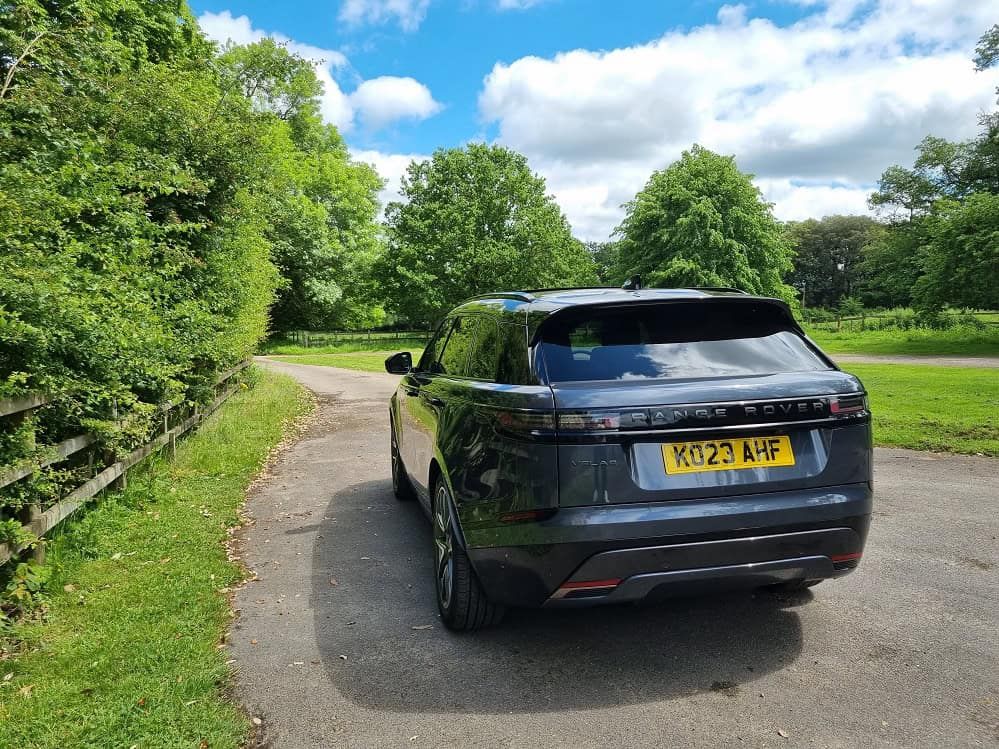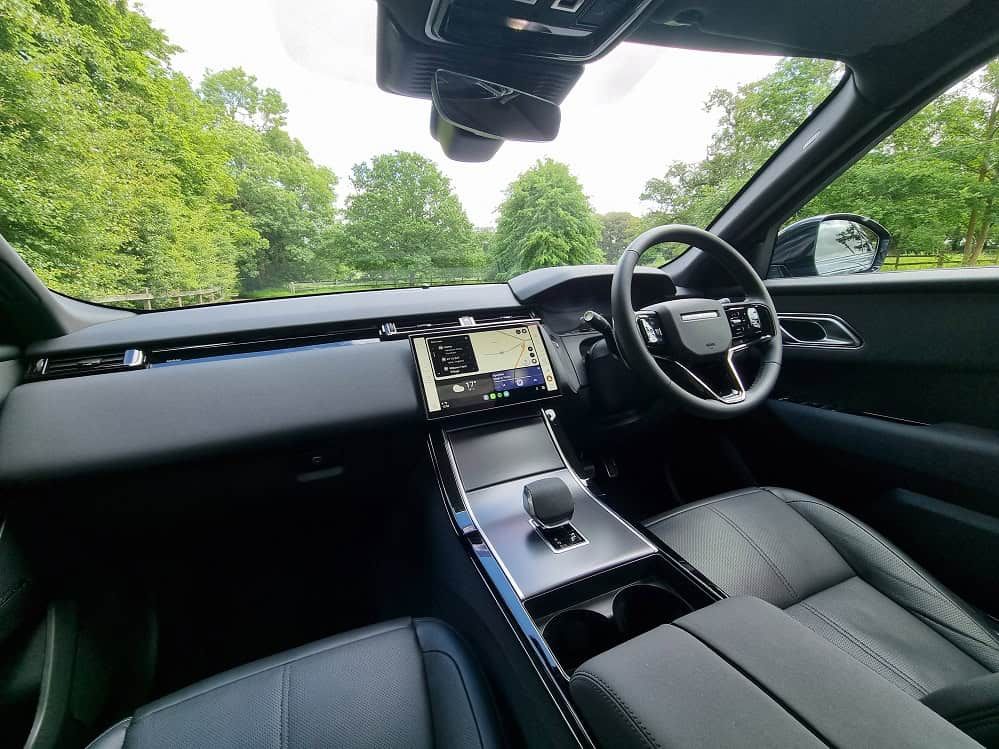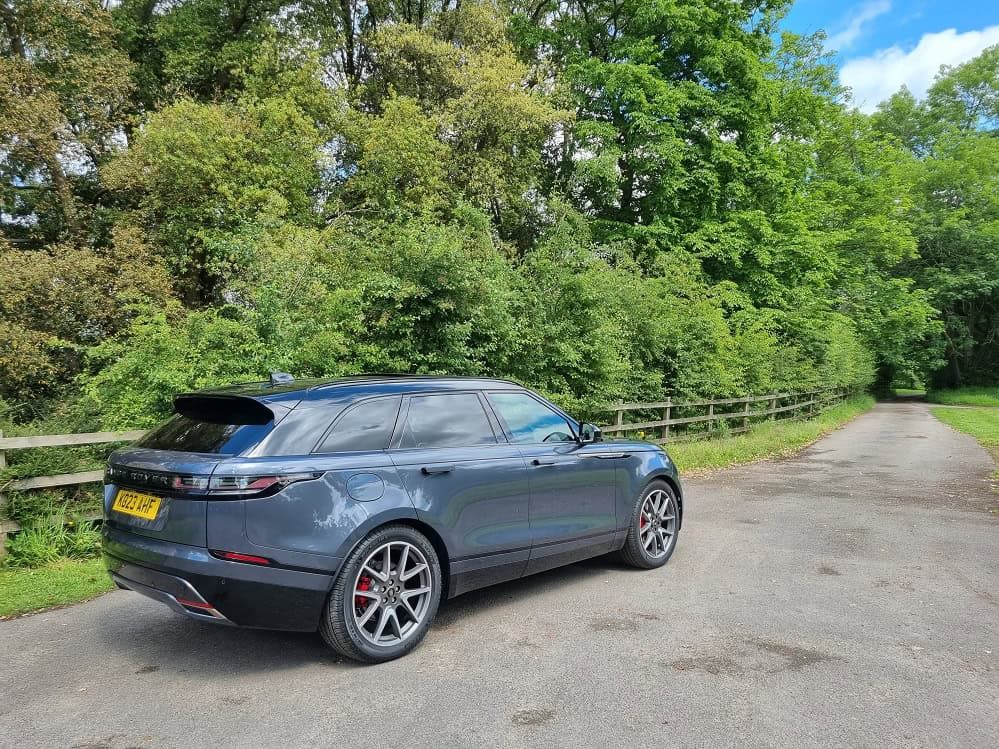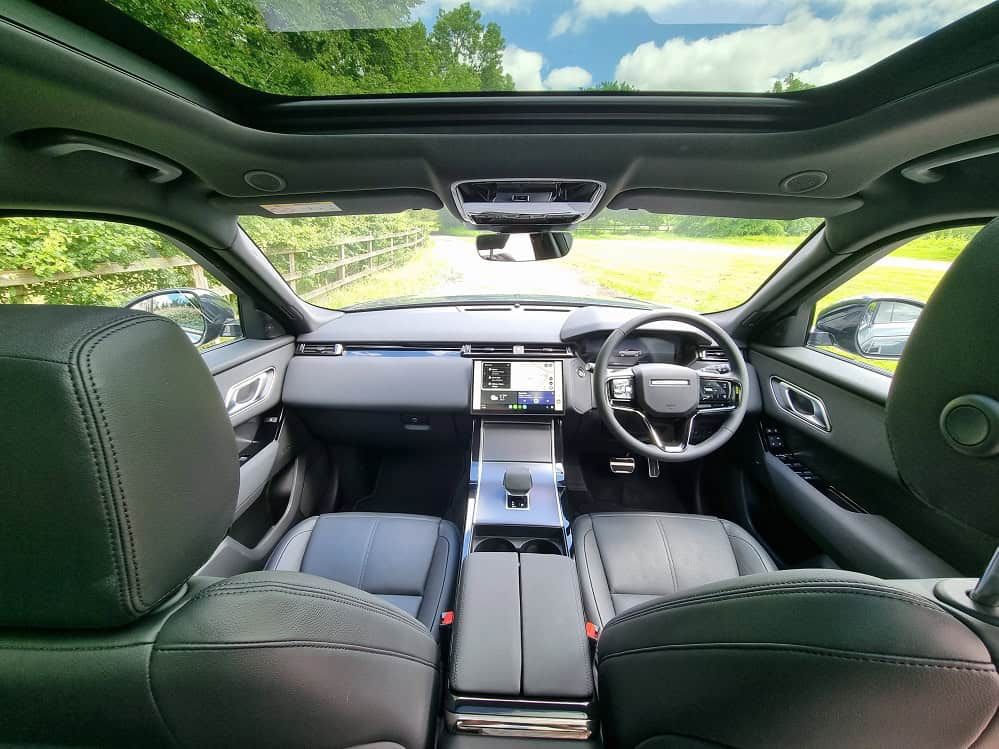It seems to be obligatory to mention in any review of any Range Rover product that it didn’t get stolen on my watch. So, let’s get that out of the way early: during two weeks with the Range Rover Velar, it didn’t get pinched. In fact, no one even bothered trying. I know this because of Range Rover’s new app, InControl. If anyone tries to interfere with your car, the app lets you know. Left it unlocked? The app also lets you know. It’s Range Rover’s way of adding a layer of safety to ownership and putting an arm around the shoulder of customers. Not that the reputation seems to have put anyone off given the number of Range Rover derivatives I’ve seen on the road recently.

Incidentally, someone who works for JLR told me that the main reason for the spate of thefts experienced by owners has been for the simple reason that they haven’t locked their cars properly. Rather than tell your customers that they’re morons, it’s probably a better PR exercise to launch a handy app. Besides, Tesla has been doing this for years, so the technology has been around for a while to do it.
At the risk of this car review becoming an app review, I’ll quickly cover InControl off now. If you’re buying a Range Rover Velar, or any other Range, you’ll be deploying the app. Lock and unlock your car, check your journey history, be informed if someone’s trying to steal your car and set the HVAC prior to departure. It works well and is easy to use. I thought I’d be turning on the AC rather than the heating in June, but every eventuality is covered.
Living with the Range Rover Velar
The app is certainly a handy accompaniment to ownership. Once you get inside, minimalism is the order of the day. Now, I like minimalism. I can say, however, that the Range Rover Velar is a clear disciple of it. The clean lines on the exterior are unfussy and relaxed. Inside, the cabin feels practically empty. I find this relaxing, but the stress comes when you introduce clutter (and people) could wreck the whole vibe. Perhaps I’m a psychopath, but I could see myself decked out in a black rollneck listening to classical music via the Merdian sound system for several hundred miles, embracing the solitude.
Alas, no such luck. I did cover several hundred miles, but they were almost exclusively with passengers onboard. Despite its clear ‘don’t put anything in me’ appeal, the Range Rover Velar is very practical. I took some friends and their kids to the airport ahead of a vacation to America and it swallowed everything with consummate ease. Three adults, two kids, a week’s worth of holiday clobber. Everything slotted into the boot.
A couple of days later I went on a family vacation of my own. Two adults, two kids, but a couple of items in with the kids in the back. The Range Rover Velar is practical, but it’s no match for my wife’s propensity to overpack.

Heathrow, Kent (twice), Devon commuting and local trips; the Range Rover Velar took it all in its stride. The leather seats are supremely comfortable, heated and ventilated. The driver assistance gubbins work well and for long journeys, the Range Rover Velar takes some topping. Even in motorway conditions it’s whisper quiet, with the imperiousness that’s the hallmark of its senior siblings.
What’s the Range Rover Velar like to drive?
On the motorway, then, it’s exceptional. 838 miles were ticked off in two weeks at 44.3mpg and, given the journeys undertaken, it was near perfect.
The model tested is the D200 SE. It’s a two-litre, four-cylinder 204hp diesel engine. What you gain in efficiency – I’d say those economy figures are impressive for a car this size – you lose in performance. 0-62mph takes 8.2secs, but the struggle is at the start of that curve in getting the Range Rover Velar moving. I would certainly be looking at a diesel, but I think I’d plump for the sprightlier D300. I would certainly opt for diesel in the full fat Range Rover, too; it’s a powertrain that fits perfectly here. Naturally, there’s a hybrid version available for your business customers out there, too.

For £2,225 you can fit the dynamic handling pack and I would suggest it’s a box worth ticking. Adaptive dynamics and electronic air suspension (plus red brake calipers!) are worth the investment. Whilst, at least in D200 guise, you don’t often feel compelled to search for the more aggressive setting, the ride quality on the electronic air suspension is first rate.
You can dial the Range Rover Velar up to dynamic then, too. This makes the dash go red and tautens the suspension a little. The Velar shows much promise in this guise and you can hustle along country roads pleasingly. It’s no sports car, granted, but it’s enjoyable in its own way. It hunkers down into corners and cushions and compresses pleasingly. Another reason to opt for a little more oomph…
It’s doing the mundane, however, where the Velar truly excels. It’s relaxed to the point of almost being soothing. On a dreary commute into west London, it was an exceptional place to be.
Conclusion
One final point to note is the Pivi Pro infotainment system. I liked it in the Range Rover and Range Rover Sport, and I like it in the Velar, too. It’s an exceptional system; aesthetically pleasing and really easy to use.
I’ve read some grumblings around Range Rover’s decision to put everything onto it, but it does work very well. I initially missed the rotary controls for the temperature, fans and seat heat. If nothing else, they were innovative, unique and easy to use. I thought they looked good, too. It is a shame they’ve gone, but I wouldn’t say things have regressed necessarily. With use, accessing the HVAC via the main screen becomes second nature. Sure, it’s fiddly the first couple of times, but thereafter it works well.

As does the rest of the car. The mid-sized SUV segment is somewhat crowded, but the Range Rover Velar more than holds its own. I like the subtle styling and love the minimalism. I was worried about people and clutter spoiling the ambience, but they didn’t. For family use, it was a perfect companion. Plus, you get the kudos of the Range Rover branding, something they’ve clearly tapped into with the Velar. The only Land Rover badge I spotted was on the key. Admittedly, I didn’t look too hard, but it has ‘Range Rover’ splashed across the rear and no hint of the green Land Rover badge to be seen.
You get that kudos with a bit more security now, too. The InControl app is a step in the right direction, without doubt. It’ll even politely remind you that you’re a moron who hasn’t locked their car properly.
If you’re in the market for a relaxing, good-looking family SUV, then the Velar remains towards the top of the pile.

